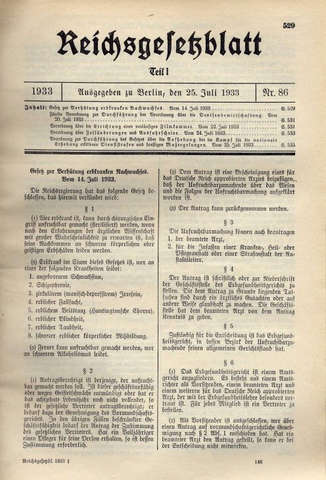Forced sterilization
On 14 July 1933, the Reich government passed the »Law for the Prevention of Genetically Diseased Offspring«. It came into force on 1 January 1934 and was partly based on a 1932 draft law of the Prussian State Health Council regarding eugenic sterilization.
Instead of the people concerned volunteering for the procedure, the government mandated »direct coercion«: in the period that followed, a nationwide network of facilities that covered and recorded the entire population according to »heredity« criteria was established. In each judicial district of a regional court, a »hereditary health court« composed of lawyers and doctors was set up. It ruled on the applications of institution directors or public health officers requesting forced sterilization. However midwives or teachers were also asked to report »racially undesirable« people.
Victims of forced sterilization justified by »racial hygiene« were mentally ill people and »epileptics«, people with physical disabilities and others stigmatised as »inferior« – e.g. those with severe alcoholism – as well as people regarded as »asocial«. The Act and subsequent amendments to it led to the forced sterilization of up to 400,000 people by 1944.
Some 5,000 men and women died as a result of forced sterilizations or forced abortions that were carried out by operations or X-rays in hospitals. Many victims of forced sterilization, such as Anna Lehnkering, Margarete H. or Wilhelm Werner, were later murdered as part of »Aktion T4«. Even today, official recognition as victims of the National Socialist dictatorship is still denied to people who were forced to undergo sterilization.

© http://www.landesarchiv-bw.de/stal/grafeneck/grafeneck02a.htm